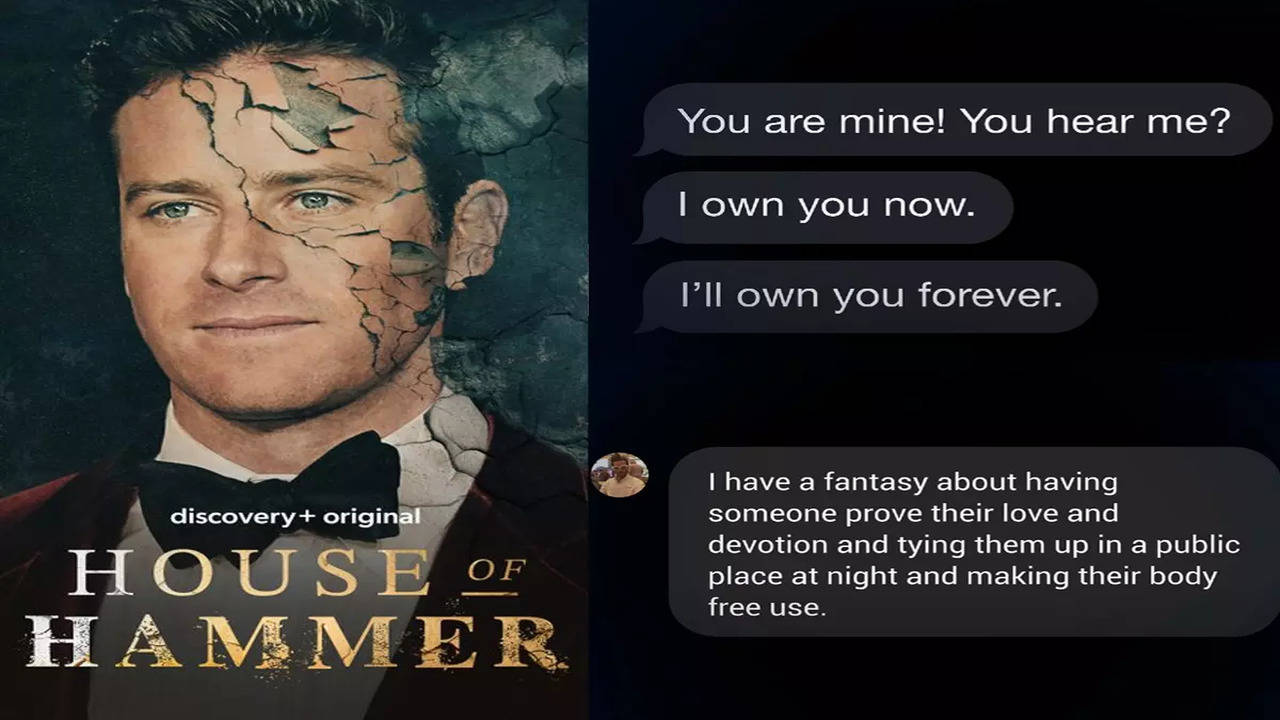House of Hammer: A Legacy Shaped by Creativity and Craftsmanship
The phrase [house of Hammer] might evoke many ideas: a legacy, a family, or even a brand rooted in creativity and craftsmanship. But what exactly is it? At its core, the [house of Hammer] represents much more than a singular concept. It signifies a rich history of dedication, innovation, and artistry, whether in the context of family dynasties, iconic cultural contributions, or even literal interpretations like the tools that built civilizations.
This article delves deep into the many layers of the [house of Hammer], exploring its origins, influence, and the reasons behind its enduring significance. You’ll gain a newfound appreciation for its place in history, culture, and even modern industries by the end.
What Is the House of Hammer?
The term [house of Hammer] holds various meanings, depending on the context. It might refer to a family name synonymous with artistic or industrial excellence, an institution renowned for its contributions, or even a conceptual “house” that embodies strength and durability. Regardless of the interpretation, the unifying thread is the spirit of resilience and creativity.
At its core, the [house of Hammer] can be broken down into two key ideas:
- Hammer as a Symbol of Strength and Craftsmanship
- The Hammer is an ancient tool, symbolizing creation, power, and utility. The Hammer has shaped human progress, from forging metal in blacksmith shops to constructing the tallest skyscrapers.
- House as a Representation of Legacy
- A house isn’t just a structure—it’s a legacy, a foundation for generations to build upon. When we think of the [house of Hammer], we picture a collective entity that has contributed meaningfully to society.
The Historical Roots of the Hammer
Before diving into the cultural or metaphorical aspects of the [house of Hammer], it’s essential to understand the tool itself. The Hammer dates back over 3 million years, with evidence suggesting early humans used simple stone hammers for hunting, building, and creating tools.
Evolution of the Hammer
- Stone Age: Early hammers were made of stone and wood used for basic survival needs.
- Bronze Age: As humans advanced, bronze hammers emerged, allowing for more precise and durable construction.
- Iron Age and Beyond: The advent of iron and steel transformed the Hammer into the tool we recognize today, capable of enduring significant pressure and impact.
The Hammer became not just a tool of utility but a symbol of progress, enabling civilizations to innovate and expand their horizons.
The Cultural Significance of the Hammer
The Hammer has long been a cultural icon in myths, religions, and popular media. Its presence in the [house of Hammer] adds layers of meaning, showcasing its role in shaping human imagination.
Mythology and Religion
- Thor’s Hammer (Mjölnir): In Norse mythology, Thor wields Mjölnir, a powerful Hammer symbolizing protection, strength, and fertility.
- Christian Symbolism: The Hammer is sometimes associated with St. Joseph, a carpenter, symbolizing honest work and humility.
Modern Pop Culture
The Hammer has found its way into films, books, and art, often representing resilience or creativity. Think of Thor’s Hammer in Marvel movies or even the imagery in industrial music and design. The [house of Hammer] often draws on this cultural significance to represent enduring strength.

The Legacy of the Hammer Family
In some contexts, [house of Hammer] refers to family legacies that have left an indelible mark on society. One notable example is the Hammer family, known for their contributions to art, industry, and philanthropy.
Armand Hammer: A Visionary Industrialist
Armand Hammer, a prominent figure in the 20th century, is often associated with the [house of Hammer]. His name, although coincidentally related to the tool, became synonymous with innovation and business acumen. As the head of Occidental Petroleum, Hammer transformed the company into a global powerhouse, embodying the industrious spirit of the Hammer.
Contributions to Art and Philanthropy
The Hammer family’s legacy extends beyond business. Armand Hammer was a passionate art collector who established the Hammer Museum in Los Angeles. This institution has become a beacon for contemporary art, embodying the creativity and cultural significance of the [house of Hammer].
The House of Hammer in Cinema
Another interpretation of the [house of Hammer] lies in cinema, particularly through Hammer Film Productions. This British film studio, established in the 1930s, became famous for its horror films, creating a genre legacy that endures to this day.
Hammer Film Productions: A Pioneer in Horror
- Classic Films: The studio is best known for iconic movies like Dracula (1958), The Curse of Frankenstein (1957), and The Mummy (1959).
- Cult Status: Hammer’s films were praised for their gothic aesthetic, intense storytelling, and memorable performances.
- Lasting Influence: Many modern filmmakers credit Hammer productions as a source of inspiration for their work, further solidifying the studio as part of the [house of Hammer] legacy.
A Revival of Interest
There has been a renewed interest in Hammer Film Productions in recent years. With remakes and restorations of classic films, the [house of Hammer] continues to captivate audiences, proving its timeless legacy.
The Hammer as a Metaphor for Modern Industry
Beyond its cultural and historical meanings, the Hammer has practical implications in modern industries, symbolizing productivity and progress. From construction to technology, the spirit of the [house of Hammer] is alive in the tools and techniques we use every day.
The Role of Hammers in Construction
The literal Hammer remains one of the most versatile tools in construction, with various types designed for specific tasks:
- Claw Hammer: Ideal for driving nails and pulling them out.
- Sledgehammer: Used for demolition work and breaking through tough materials.
- Ball Peen Hammer: Common in metalworking and shaping metal.
Technology and Innovation
While the physical Hammer plays a role in construction, the metaphorical Hammer drives technological advancements. Companies and inventors in the [house of Hammer] mindset create solutions that “build” the future.
A Symbol of Strength and Unity
The [house of Hammer] isn’t just about a tool or a legacy—it symbolises strength and unity. In every interpretation, the Hammer represents building something lasting, whether a structure, a family, or a cultural phenomenon.
Why the Hammer Resonates
- Timelessness: The Hammer has existed for millennia, proving its enduring relevance.
- Universality: Regardless of culture or profession, the Hammer is a tool everyone recognizes.
- Symbolism: It stands for hard work, resilience, and the power to create.
A Closer Look: Comparing Types of Hammers
To better understand the practical side of the [house of Hammer], let’s compare some of the most common types of hammers in a table:
Hammer TypePrimary UseUnique Features
Claw Hammer Driving/pulling nails Curved claw for nail removal
Sledgehammer Demolition work Heavy head for maximum force
Ball Peen Hammer Metalworking Rounded head for shaping metal
Rubber Mallet Gentle adjustments Non-marring surface to avoid damage
Framing Hammer Heavy-duty construction Extra weight for driving large nails
This tool diversity showcases how the Hammer has adapted to meet various needs, embodying the innovation inherent in the [house of Hammer].
The Future of the House of Hammer
As we move into the 21st century, the concept of the [house of Hammer] continues evolving. From its historical roots to modern applications, the Hammer remains a potent symbol of progress and creativity.
Innovations in Tool Design
With advancements in technology, hammers are becoming more ergonomic and efficient. Materials like carbon fibre and shock-absorbing handles make them easier to use, while smart tools integrate technology for precision work.
Expanding the Legacy
Whether through art, industry, or culture, the [house of Hammer] will undoubtedly inspire future generations to embrace its resilience, creativity, and craftsmanship values.

Conclusion: Why the House of Hammer Matters
In conclusion, the [house of HammerHammer] isn’t just about a tool or a family—it’s about an idea. It represents the intersection of tradition and innovation, blending history with modernity in a practical and inspiring way.
Whether you’re holding a literal hammer to build something tangible, watching a classic film from Hammer Productions, or appreciating the philanthropic contributions of families like the Hammers, you’re engaging with a legacy that transcends time.
So, the next time you hear the phrase [house of Hammer], remember its deeper meanings. It’s not just about strength or craftsmanship—it’s about the enduring human spirit to create, innovate, and leave a lasting impact.
Explore More About the [House of Hammer]
If this article has sparked your curiosity, take some time to delve deeper into the world of hammers, their history, and the cultural legacies tied to them. You never know what you might discover about this incredible [house of hammers]!



